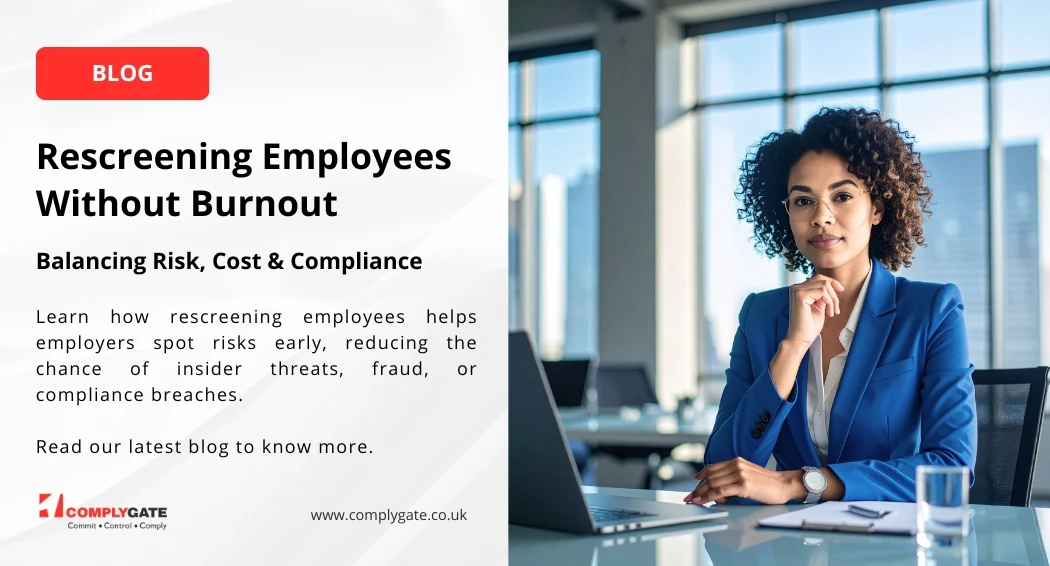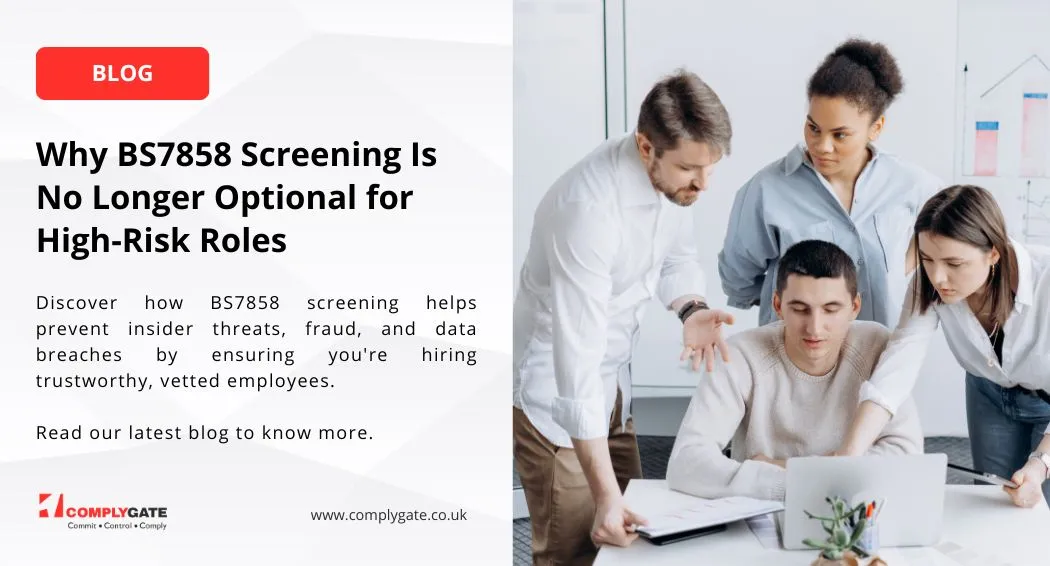Are We Going ‘Back to the Future’? Covid-19’s Impact on the World of Work ©
Professor Chris Rowley
Complygate, September 2021
Introduction
The Covid-19 global pandemic has resulted in myriad and swift changes to both working life and also its management. As countries grapple with sensible, safe and lasting exit strategies from the variety – by breadth, depth and length - of lockdowns, we can reflect on how the world of work has changed and the results for both line and human resource (HR) managers. We can note in passing the problems around any ‘Covid-safe’ protocols and practices, while more recent debates have revolved around the idea of vaccination ‘passports’ in relation to workplaces.
One of the biggest initial impacts has come from the commonplace work at home orders and instructions given by governments. These resulted in a massive increase in the working from home (WFH) phenomenon. This has turbocharged the area that was earlier captured under the rubric of ‘flexible’ or ‘remote’ working. Dependent on the sector and ‘product’, many organisations and businesses implemented WFH mainly in a rushed fashion and in a variety of ways, albeit some organisations already had degrees of such working arrangements.
Now many countries and businesses are encouraging a return to workplaces, not least to support all those incidental businesses that orbit office life. Businesses are being left to decide how to interpret government advice on protecting workers and employees, including whether to maintain higher levels of Covid-19 precautions than mandated. Yet, despite relaxations and drift back to workplaces, after more than 18 months, WFH programmes and projects still remain and companies are setting out a variety of very different approaches (Thomas, 2021) even within the same sector. Of course, even among “all-remote” companies, most of which existed before the pandemic, and those offering lots of flexibility, there remain front-office, security and other staff who have to be present every day. Retailers offering flexible and remote working, such as Asda and John Lewis, still have to staff their stores (Hill, 2021).
Examples
Managers have started to boost both incentives and pressure for staff to at least partially return workplaces. Thus, Uber announced in April its “clear expectation” that employees should come to the office 3 days a week. In June, it amended the expectation to 50% working in offices, spread in the best way, be that 3 days one week, 2 the next, or 5 days followed by none the following week (Beioley, 2021). Apple was another early mover, telling employees in June that from early September they would be required to return to the office at least 3 days a week. Bankers at Goldman Sachs were called back to their desks in June while the same month Morgan Stanley’s chief executive exhorted that he would be “very disappointed” if staff were not coming into the office by September, declaring to New York-based staff that “if you can go into a restaurant in New York City, you can come into the office and we want you in the office” (Ibid.) In contrast, accountancy firm BDO told staff to decide for themselves when to return to offices, allowing them to work wherever was most productive, depending on the task, meaning a mixture of WFH, in the office and clients’ offices (Ibid.). In June law firm Norton Rose Fulbright stated a week could be 2 days working alongside their team, 2 days working from home and 1 flexible day or office working and with the choice of their own hours while others have been more prescriptive, for example, KPMG employees were told they could spend a maximum of 4 days every 2 weeks in the office (Ibid.).
However, the persistence of Covid-19 and spread of new variants has overturned many return-to-office plans (Hill, 2021). For example, as reported by Hill (2021), many US companies that had originally set September 7 — the day after Labor Day — as the time to bring at least some staff back to offices, postponed. In August, Wells Fargo, the bank, pushed its return date to October, BlackRock also postponed a full return to the office until October, while Amazon deferred its expected date for regular attendance to January 2022.
Nevertheless, some broad trends are emerging. These can be seen in the FT’s sampling of companies’ “flexibility factor”, or the extent employees decide where they work, which covers Banking, Energy, Fintech, Professional Services, Retail and Consumer, Technology and Telecoms, Transport and Travel sectors (Ibid.). Here companies are coalescing around a trio of practices, offering staff: 1) Lots of Flexibility, for instance, streaming service Spotify, which adopted the philosophy that “giving people the freedom to choose where they work will boost effectiveness”; 2) Less Flexibility, including investment banks Goldman Sachs, JPMorgan Chase and Morgan Stanley, which made clear they expect staff to return to offices, albeit there are nuances and comments that, as they did before lockdown, they continue to permit exceptions to the general in-office preference; 3) Some Flexibility (the “hybrid” model), the vast majority, though approaches vary widely and multinationals apply different models in different regions (Ibid.).
In terms of sectoral trends, Fintech and Technology tend towards hybrid and more flexible models. For instance, payments company Revolut announced a shift to “permanent flexible working” in February, repurposing offices as collaboration spaces or “Rev Labs”. Professional Services, including the Big Four accountants EY and KPMG, also tend to have higher flexibility. Traditional Financial Services are more office-centric, although with notable exceptions of flexibility. For instance, NatWest’s “remote-first”, “hybrid” and “office-first” mix, in which 55% of staff are expected to be hybrid, 13% will work in the office full time, while Nationwide in March said it would introduce a “work anywhere” policy (Ibid.).
The Case Against and For WFH
What might help explain this variety? Views on WFH have societal and organisational cultural biases to them, some stemming from different sectors. We only need to see the all too typical US financial services ‘gung ho’ responses versus the more hesitant UK public sector to see this at play. Another explanation concerns a WFH ‘cost-benefit’ analysis, which remains hotly contested, reflecting many of those used in the earlier ‘flexible’ and ‘remote’ working debates. This is not helped as arguments are also mistakenly presented as both ahistorical and as a binary choice. In contrast, a better starting point is that there is far too much ‘strawman’ (sic) building and ‘rose tinted spectacle’ wearing - on both sides of the argument. Rather, we need to recall the rhetoric versus reality here. One the one side, the halcyon days of office working is often a myth, as is the other side of the nirvana of the comfort and ‘freedom’ of the flexibility of remote working.
There is some evidence indicating the importance of colleagues gathering in person and of so-called ‘weak ties’ (Granovetter, 1973). These are relationships between people who do not work together closely but still get to know each other over time. However, earlier attempts to encourage such links (and save costs of course) via interactive spaces, replacing personal offices with more open plan, came with its own drawbacks and costs (O’Connor, 2021). For example, research on how the human brain actually works (Evans and Johnson, 2000) shows noise volumes in open plan offices cause elevated levels of epinephrine, the hormone that tells us to ‘fight, flight or freeze’, rather than focus on our work as overhearing ‘halfversations’ (Medina and Mullenix, 2018) is distracting because our brains try to fill in the other half (Galvan et al, 2013) while lack of private space in offices makes us uncomfortable (Beck, 2014). Thus, such forms of office work may paradoxically even undermine, rather than boost, the very advantages they are supposed to deliver, leading to less, not more, collaboration (O’Connor, 2021).
Likewise, some flexible and remote working was exploitative, being little more than ‘always at work’ and untrusted and even highly controlled by a battery of specialist ‘spy’ software. This WFH was sometimes also inappropriate and inefficient, such as in shared and cramped conditions, sitting on the edge of a bed with the detritus, distractions and demands of everyday life around. Then there were the often ‘swept under the carpet’ WFH policy issues of impacts and equality in terms of access to training, pay and careers.
Putting WFH Choices in Context
To help understand this variety more, rather than a simple ‘either/or’ binary divide, we can place WFH choices on a spectrum, allowing more ‘mixed’ or ‘blended’ working. Within this, blended WFH would be contingent on thinking about answers to triple key dimensions of the work. First, depth, what sort and type of work is being done, ie routine, administrative, procedural versus knowledge, conceptual, intellectual, knowledge, etc? Second, scale, what breadth does this working encompass, ie how individual versus team based is it, etc. Both of these are impacted on by the third dimension, temporal - how long is such working for, ie hours per day, days per week, weeks per year? These can be seen in the 3-dimensional figure below.
Figure 1: Putting WFH In Context

The differences in responses to these WFH choices arise due to different views on a trio of key issues, ‘CIP’:
- Control. Many managers at various levels are uncomfortable with giving this up. This is reflected by many staff who may not want to be given more control themselves either. Yet, this is not a simple binary decision, but rather this is on a scale and seen as in the idea of ‘relative autonomy’. Inter-mingled with this are issues of a fear of a loss of status and hierarchy and lack of skills to manage people remotely.
- Inspiration. The common clarion call is of the damage to the ‘water cooler moment’, the sparking of new ideas, serendipity, the idea of the role of ‘collegiality’ and need to ‘bounce ideas of others’, especially in certain sectors. Yet, as we have seen this idea of office innovative nirvana may not be so and it is highly dependent on sector and corporate culture and driven by individuals as well as the business itself.
- Performance. Research is not clear cut or unambiguous. However, some work does show some better outcomes, irrespective of time and ‘costs’ in commuting, environmental impacts and so on.
In terms of the above, companies must move away from surveillance, ‘presentism’ and ‘visible busyness’ and toward defined outcomes and trust (Newport, 2021). Furthermore, Hartford (2021) sets out the lessons stemming from crisis, such as the Covid-19 pandemic, as they block old paths and encourage exploration of new ones. It can take the jolt of a crisis to awaken us to what has long been possible, with investment in new capital and skills, such as home workers boosting their broadband, installing webcams and better chairs and developing skills for video meetings, etc during the Covid-19 pandemic (ibid.). More subtle and important is the shifting of social norms - crisis can prompt us to find new and better ways to live our lives, both individually and collectively as we try new ideas, develop new skills, invest in new kit and draw strength from the fact that others are doing likewise (Ibid.). Resilience is essential but it is not enough: we need to be able to explore, experiment and adapt (Ibid.).
Conclusion
Although crisis, such as Covid-19, present opportunities, this is only if we actually seize them, meaning being willing to learn and change (Ibid.). When Covid finally fades some people, organisations and governments will be building on what has been learnt, but disappointingly others have been scrambling to get back to 2019 all along (Ibid.).
Covid-19 has decimated much in our lives and society, but perhaps the glimmer of a silver lining can be seen in its dark clouds in that it has pushed some reluctant businesses and managers over the Rubicon to at the oft-resisted WFH. I remain optimistic that as the pandemic recedes, this more advanced bridgehead of a more balanced and health work-life balance that WFH promises, will not be similarly retreated from.
References
Beck, J. (2014) ‘The optimal office’, The Atlantic, April Beioley, K. (2021) ‘Law firm trials flexible working schemes with junior lawyers’, Financial Times, 14 July
Evans, G. and Johnson, D. (2000) ‘Stress and open-office noise’, Journal of Applied Psychology, 85 (5): 779-83
Galvan, V., Vessal, R. and Golley, M. (2013) ‘The effects of cell phone conversations on the attention and memory of bystanders’, PloS ONE, 8 (3)
Granovetter, M. (1973) ‘The strength of weak ties’, American Journal of Sociology, 78 (6): 1360-80
Hartford, T. (2021) ‘When obstacles become opportunities to work better: Or why going back to 2019 is not progress’, Financial Times, 24 September
Hill, A. (2021) ‘The flexibility factor: who is going back to the office?’, Financial Times, 14 September
Medina, J. and Mullenix, R. (2018) ‘How neuroscience is optimizing the office’, The Wall Street Journal, 1 May
Newport, C. (2021) ‘How to achieve sustainable remote work’, The New Yorker, 9 July
O’Connor, S. (2021) ‘Long live the (reconfigured) office’, Financial Times, 29 June
Thomas, D. (2021) ‘Companies wrestle with Covid safety as relaxation of rules in England looms’, Financial Times, 13 July











